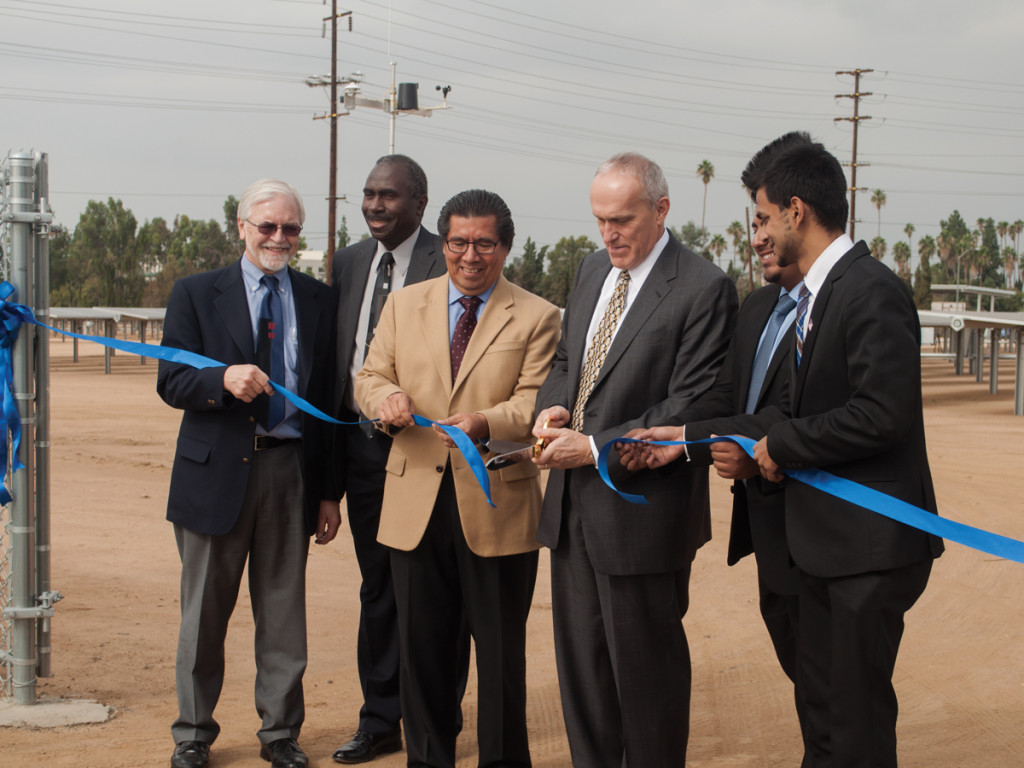
An opening ceremony was held last Thursday to celebrate the grand opening of UCR’s solar farm, the largest of its kind in the UC system. Located near the UCR community garden behind Lot 30, the solar farm seeks to reduce peak demand of electricity, while also helping improve clean energy production around UCR and the city of Riverside. The 7,440 panels work by providing the electricity to the city’s electrical grid, which powers the area around UCR.
The campus signed a power purchase agreement in 2011 with Sun Power Corporation, based in San Jose, Calif., to help support the solar farm at UCR. The Green Campus Action Plan (GCAP) Committee spent $350,000 to clear the site and prepare the project to begin building in 2012. The Sun Power Corporation will cover any other potential costs associated with construction, operations and maintenance for the solar farm over a 20-year-period.
The solar farm is projected to produce 6.6 million megawatt-hours of electricity annually, which is enough to generate power for 960 homes each year. It is also projected to save $4.3 million for the campus over the length of the contract.
According to UCR’s Director of Sustainability Dr. John Cook, “The total renewable energy production from the solar farm combined with solar carport at CE-CERT will increase the solar (photovoltaic) in the city of Riverside by 40 percent.”
Other benefits include carbon reduction and LEED certification, which will provide additional financial and environmental benefits. LEED certification is given to buildings and structures which fulfill certain energy-saving prerequisites.
Cook said that, “The solar array has been in discussion for six years … The technology has been available for decades, it is just the cost that has been the limiting factor for most.” In addition, Cook mentioned that there were “many drivers” to push the project, including student investment in renewable energy and the UC Sustainable Practices Policy, which establishes goals for implementing sustainable and environmentally sound policies.
The benefits to campus may also improve UCR’s environmental rankings and generate interest in the university. “The solar farm is visible from the 215 and 60 (freeways). We will have a dashboard so people can track the energy production and it will raise our rankings in Sierra Cool Schools, Princeton Review of Green colleges and AASHE STARS,” Cook stated.
The solar panels’ cost has been questioned by some students. Arturo Perez, a fourth-year English major, stated that while “the benefits of cleaner energy can reduce the cost for the campus, the initial cost is really high, possibly affecting our tuition.”
Brandon Prell, a third-year cellular and molecular biology major, made a much more cynical statement. “I think it’s funny how they do this to save $4.3 million yet they probably won’t lower tuition at all. They also should have built the panels over Lot 30 to provide shade for vehicles during those hot March-October months.”
“Leading the state in clean energy is exactly why the University of California was developed,” said ASUCR Vice President of Internal Affairs Fernando Echeverria in an interview. “In order to move away from our dependency on fossil fuels these are the type of projects to invest in. We are the generation that will have to solve climate change (and) we will have to show the next generation that it is possible to move to green clean energy.”








